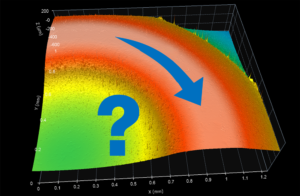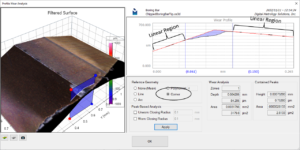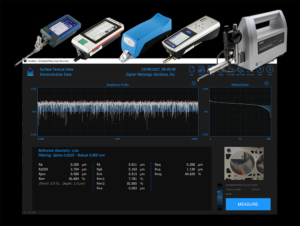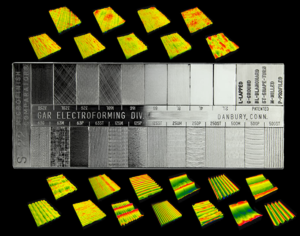Engine Performance Expo
We had some amazing sessions last week at the Engine Performance Expo. When you get this many high performance enthusiasts in the same room, it's bound to be a blast! We'll share some excerpts with you over the next days and weeks.
In this session from Day 2 Digital Metrology's Mark Malburg got to talk with Lake Speed, Jr. about cylinder bores, "the most engineered surfaces on the planet." If you can see the shapes of the texture as well as calculate the numbers, you can understand and improve critical surfaces like these. New tools like Total Seal's Surface System with Digital Metrology's TraceBoss and HatchView software help connect the numbers back to the craftsmanship—and that combination leads to excellent engines.
Stone Polishing and Surface Texture
What surface texture makes a stone look good and feel good to the touch as well? We recently collaborated with stone enthusiast and retired metrologist Bob Rother to understand exactly what gives a stone a pleasing shape and texture. See how we did it in this Surface Notes blog post.
Read MoreWhat’s in Your Cylinder Bore?
Engine cylinder bore surfaces are among the most “engineered” surfaces in the world. In this Surface Notes blog post we look at some of the very different shapes that you might find in a cylinder bore.
Read MoreNotepad Video: Why Use a Skid?
A stylus on a surface roughness gage is susceptible to outside influences such as vibration, which will introduce errors to the measurement. A larger-radius "skidded" probe will stabilize the stylus...but it can cause other errors as well. In this Notepad Series video we describe how a skid can help improve your data, and potential pitfalls that you need to be aware of in order to make reliable measurements.
Read MoreSurface Roughness in Biological Research
What can surface texture tell us about how biological communities evolve? Dr. Jessica Arbour and her team at MTSU are using OmniSurf3D software to study the differences in the physical traits of fish. Their goal is to better understand why some species “stay with one biological plan” while others diversify into many forms.
Read MoreCurved Profile Tool in OmniSurf3D
Sometimes roughness matters along a curved path — but a stylus can’t measure along a curve. What can you do? A new tool in OmniSurf3D lets you construct a curved path over your data and analyze the profile along that curve. Find out more in this Surface Matters blog post.
Read MoreAssessing Cutting Tool Wear or Chipping
In this new blog post we look at the steps to measure wear or damage on a cutting tool. Tools in OmniSurf3D software make the process easy and informative.
Read MoreTraceBoss goes skidless!
TraceBoss software now supports the Zeiss/ACCRETECH Surfcom TOUCH 50! Now you can see your data full screen, with the parameters that count, whether your gage is skidded or skidless!
Read MoreIntroducing TraceBoss!
TraceBoss software interfaces instantly with most portable surface roughness gages to let you see your data full screen, with the parameters that count. Its simple interface is designed for fast production measurements, to help you see, save, and understand your surfaces like never before.
Read MoreGAR Strip: New additions to the Surface Library
This week we made a big addition to the our Surface Library of 3D surface texture datasets! The new Microfinish Comparator series includes high resolution, 3D data of the 22 surface texture samples on a GAR S-22 microfinish comparator gage. These textures represent various machining operations and surface roughness amplitudes. These samples make it easy to compare and explore these common surfaces in great detail.
Read More









